– Welcome, everyone, to Wednesday Nite @ the Lab. I’m Tom Zinnen. I work here at the UW-Madison Biotechnology Center. I also work for the Division of Extension Wisconsin 4-H. And on behalf of those folks and our other co-organizers, PBS Wisconsin, the Wisconsin Alumni Association, and the UW-Madison Science Alliance, thanks again for coming to Wednesday Nite @ the Lab. We do this every Wednesday night, 50 times a year. Tonight, it’s my pleasure to introduce to you Jessica Hua. She’s a professor here in the Department of Forest and Wildlife Ecology. She was prompted on the five questions, so hopefully she’s had time to adjust. [Jessica laughing] Jessica, the rules are you get to answer the questions in any way that you’d like. Doesn’t have to be true; just has to be believable. Where were you born?
– I was born in Kingston, New York.
– And where’d you go to high school?
– Westwood High School in Austin, Texas.
– Whoa, and then where’d you go for your undergrad and what did you study?
– I went to Southwestern University and I studied biology and kinesiology.
– We lost our signal. We have our signal. Good.
– Exciting.
– And I said the word kinesiology and it went away. And then where’d you go for your advanced degrees and what did you study?
– I went to the University of Pittsburgh for my PhD and I studied ecology and evolution there.
– And then did you do any postdocs?
– I did; I spent about a year at Purdue University.
– And then where did you go after Purdue?
– After Purdue, I got my first assistant professor position at Binghamton University.
– And that’s part of the State University of New York.
– That is.
– Way to go. And then when did you come here?
– I came here this past fall, so, brand-new.
– Good timing. [Jessica chuckling] It’s a delight to have you here. You’re gonna talk with us about pollutants, parasites, and you. Would you please join me in welcoming Jessica Hua to Wednesday Nite @ the Lab?
[audience applauding]
– Thank you all for being here. I appreciate the invitation. I am really excited to have this chance to share a little bit more about what my students and I have been doing for the past few years. So for today’s talk, I have broken up these slides into three themes. The first will focus on pollutants and the pollutants that we study. Then I’ll talk about emerging infectious diseases, so the parasites. And then I’ll finish up with people. So if you’re interested in any of the work that we do, how might you get involved in some of the work we are working on in the next few years here at UW-Madison. So broadly, we are a global change biology lab. We’re interested in a wide range of different global change factors, from things like emerging infectious diseases, changes in our climates, habitat shifts, pollutants, how these various factors influence natural ecosystems. And so under this broader umbrella of global change biology, today, what I’ll focus this talk on will be how do pollutants influence aquatic ecosystems?
And so to understand how pollutants influence aquatic ecosystems, a traditional approach is we can take a pollutant and ask, “What is the direct toxicity of this pollutant on model organisms?” There are a wide range of different organisms, a wide diversity of organisms that are in nature. Trying to understand the toxicity of a chemical or pollutant on each one of these organisms just isn’t feasible. So we can focus on these models, understand the toxicity of a pollutant on a fish, a vertebrate model, then extrapolate to how might this pollutant influence more complex ecosystems. So these short-term lab tests can help us to predict pollutant toxicity in complex communities. There are many benefits to this approach. It’s fast, it’s simple, it’s easy to replicate, but also, there are limitations. For instance, we’re using these model organisms to extrapolate risk to the rest of community, which may be very different than the model organism. Second, it’s rare that you ever would find an organism existing in a vacuum. They’re interacting with other organisms, which may influence how toxic a chemical might be. And so a central theme in my lab is to ask, “How can we integrate ecological complexity into our understanding of pollutants?” And so that’s what I’ll focus the first part of this talk on. I’ll tell you about our tiered approach and how we work to integrate in this complexity into ecotoxicology.
In my lab, we work with a wide range of pollutants, from microplastics to light pollution to pesticides. Today, I’ll tell you about the tiered approach using road salts as an example. So road salts are common pollutants in freshwater ecosystems. They’re used to protect our roadways or to protect drivers on our roadways, but they can enter into freshwater ecosystems and can cause negative consequences. And so to understand the toxicity, the effects of road salts, we can focus on model organisms and then extrapolate out. But are these model organisms, are they generalizable to the wide diversity of organisms that are in nature? In the first section, I’ll start simply at the species level. Are the effects of these pollutants generalizable across species that are similar to each other? Next, I’ll start building in that complexity. We know that in nature, organisms are living in habitats that differ from one location to the next that might affect their susceptibility. So even across individuals of the same species, are the effects of salt generalizable?
Next, even more complexity. We know that organisms are interacting with a wide range of other organisms in their environment. How do pollutants like salt influence these interactions? So this is now at the community level. Lastly, at the ecosystem level. So we’ve talked about interactions between living organisms. What about the non-living components of the ecosystem? So how do differences in environmental conditions influence the toxicity of salt? So this is how, I’ll show you how we build in that complexity from the species level all the way up to the ecosystem level. And so we’re interested in integrating ecological complexity, but also evolutionary processes are fundamental. There are many examples of evolutionary responses to pollutants. We have the evolution of antibiotic resistance, we have the evolution of tolerance to pesticides. In my lab, we’re interested in integrating an evolutionary perspective into our understanding of host-parasite interactions. So why host-parasite interactions? Diseases, they’re emerging at unprecedented rates. So we’re interested in understanding how human activities might influence these outcomes.
Additionally, these host-parasite interactions are at the forefront of public thought, given the past few years of the COVID pandemic. And so when it comes to host-parasite interactions, one approach is to ask, “What are factors that influence a host’s ability to defend itself against parasites?” Or you could look at the parasite perspective. What are factors that influence the parasite’s ability to infect the host? Now, building upon this model, the field of disease ecology has increasingly recognized the importance of the environment in shaping these interactions. In my lab, we’re interested in the effects of pollutants. So how do pollutants affect hosts and parasites? So on the screen, this is the disease triangle framework. It’s a really useful framework for breaking down the effects of pollutants on hosts, on parasites, and then their interactions. But in today’s talk, what I’d like to advocate for is integrating in an evolutionary perspective to this disease triangle framework. We know that pollutants can cause selection, host and parasites can evolve tolerance to pollutants like pesticides. This can be costly. How does it then affect their ability to defend themselves against parasites? And so how do evolutionary responses, EVO, what are the consequences, the ecological consequences on host-parasite interactions? So EVO-ECO. And so in this second section, I’ll tell you about some of our work with pesticides and focusing on EVO-ECO dynamics.
Lastly, global change biology. This is a field that is intimately linked with humans and also conservation. And so it’s important to me and also members of my lab that we find ways of more effectively communicating our research to broader audiences and also making science accessible to more people in the public. And so in the final section, I’ll tell you about our science communication and outreach work, specifically how we’ve used non-traditional approaches like art and visual narratives to try to facilitate understanding and perception of science. So this is the outline for today. I’ll spend 20 minutes on the first section, about 10 minutes on the EVO-ECO section, and the remainder of the time on the science communication and outreach section.
So jumping right in, what are the effects of road salts? We can start by focusing on these model organisms, but are the effects of these model organisms, are the effects of salt on these model organisms, are they generalizable to the diversity of organisms in nature? At the species level, we can ask, “Are the effects of sodium chloride generalizable across similar wetland species?” And so throughout the talk, I’ll highlight the students that were responsible for leading the project. So this is Dr. Nick Buss, a former PhD student. So to address this question, a common approach might be to use an LC50 test, a lethal concentration 50 test. This is simply the concentration that is lethal to 50% of an organism, of your test organism. So the way that a study like this can work is you can expose your model organism to increasing concentrations of a pollutant. We might expect that you have lower survival at the highest concentration, so something that looks like this. We can then graph this response. On the x-axis, we have the concentration, on the y-axis, we have response. We’ll probably get a curve that looks like this. The LC50 value is then the concentration at which there is 50% mortality. So what’s really nice about these assays is that they’re easy to replicate across species. Then you get an LC50 value that you can then compare relative tolerance.
So what are the model organisms we work with? In my lab, oftentimes, it’s amphibians. And there are many reasons for this, one of which is amphibians are incredibly neat. There are over 8,000 species worldwide. However, over a third of them are threatened. And they’re threatened for a wide variety of reasons, including pollutants. And so understanding what pollutants do to these amphibians also has broad conservation implications. When it comes to the toxicology aspect of using amphibians, amphibians are great models because they have highly permeable skin. This makes them susceptible to many pollutants, and so they’re often called an indicator species, oftentimes the first warning that something might be wrong with the community.
So using amphibians as our model, what did we do? We conducted LC50 tests for four common amphibian larvae. We focused on wood frogs, spring peepers, leopard frogs, and also American toads. So on the x-axis, that’s the species. On the y-axis, this is that LC50 value. A higher LC50 value would indicate that the tadpole is more tolerant, so they can tolerate a higher concentration before experiencing 50% mortality. So right off the bat, perhaps one thing that you notice is that there is wide variation in the LC50 value across even species that are similar to each other, that live in similar habitats. From the most to the least susceptible tadpole species, there’s about a 50% difference. Now, as you’re looking at this, one thing that you might be wondering is what do these numbers mean relative to, say, concentrations of salt found in nature?
So for reference, the highest concentration in freshwater was in runoff; this is about 18 grams per liter. The highest concentration found in a wetland was about 4. 6 grams per liter. And this was a worst-case scenario situation. And so you see that this line overlaps with the wood frog and the spring peeper. So if there were a contamination event at this level, then wood frogs and spring peepers might be vulnerable. However, the majority of ponds that we work with have concentrations ranging from 0 to 1. 1 grams per liter. So put all together, what are some of the take-homes that you should take from this first section? First, sodium chloride can cause mortality for the more susceptible species, wood frogs and spring peepers, but only in worst-case scenarios. In fact, of the ponds that we work in, most of them have low environment, like these low environmentally-relevant concentrations that do not cause direct mortality.
By taking a step back, the main take-home that I’d like to communicate here is that considering species-level variation is important. We focus on these model organisms to make predictions about, sometimes very different organisms. In this case, we see that even across organisms that are similar to each other, the effects of the toxicity of sodium chloride are not generalizable. Now, of course, there are limitations to these LC50 tests. First of which, these tests are designed to facilitate repeatability. So we often use a single population of organisms, so very low genetic variation. This is important because in nature, we have populations that live in very different habitats. You might have a population that live in a pond right next to a roadway. They’re exposed to a number of different contaminants that might affect how they respond to pollutants. Alternatively, you might have a population that live in an environment that, such as this. This is in northwestern Pennsylvania. It is about a thousand meters from the closest road. And this closest road is a dirt path, so unlikely to be experiencing as much human activity. And so integrating in this variation, this population level variation is important because even among individuals of the same species, we need to know, are the effects of salt generalizable?
And so moving on, now adding in that complexity at the population level, we can ask how generalizable is sodium chloride across toxicity across populations? To do this, we went out and we collected eggs of wood frogs from a number of different populations. And these populations vary in how close they are to human activity. Once we collected these individuals or these egg masses, we raised them in common garden environments. So they were all raised in pollutant-free environments. And then once they reached the tadpole stage, we asked, “How tolerant were these tadpoles from the different populations?” We exposed them all to a single concentration of salt and measured their survival over time. And this is what you’ll see here in this figure. On the x-axis is time, on the y-axis is percent survival. What will pop up will be different lines, and each of these lines represents a different population. So likely what you see again is there is, even within individuals of the same species, there is wide variation. In fact, from the most to the least susceptible population, it’s about a 61% difference in susceptibility. This was more than for the variation in susceptibility across species. And so taking a step back, what does this mean and what should you take away from this study?
First, there is high variation in susceptibility to sodium chloride across populations. Even across individuals of the same species, there is this variation. This matters because we need to take care in making conclusions based on single population studies. In other words, let’s say we’re conducting an LC50 test and we just so happen to use a highly-tolerant population. This might lead to a complete underestimation of how toxic that chemical or that pollutant is. Whereas if you use a population that is highly susceptible, you may overestimate that toxicity. So again, I hope that sort of these studies have shown why it’s so useful to have an ecological perspective when thinking about the effects of pollutants on aquatic ecosystems. Similar to before, there are limitations. Thus far, I’ve talked to you only about the lethal effects of pollutants. I showed earlier that the ponds that we work in, the majority of them have really low concentrations. And so I think what’s important to consider here is these low environmentally-relevant concentrations, they may not cause direct lethal effects, but can they still have effects that harm organisms by modifying how these organisms are interacting with other organisms in their environment?
And so what I mean by this is in my lab, we study ecological interactions; for instance, the interaction between prey and their predators, or the interaction between competitors, so tadpoles competing with each other, and also the interaction between hosts and their parasites. And so the question in this section now at the community level, now integrating in this living component is can low levels, environmentally-relevant levels of sodium chloride, modify the way species interact with each other? For the sake of time, I’ll focus just on our work with parasites. In my lab, we work with a number of different parasites. Ranavirus, which is an emerging infectious disease that influences amphibians, turtles, fish, trematodes, very common in ponds and wetlands, and also a fungal pathogen Chytrid or Bd. For this section, I’ll focus on the trematode. Trematodes are a really interesting parasite species. They have multiple hosts. So what I’m showing on the screen, this is the free swimming stage, one of the free swimming stages, the cercaria form. This cercaria will swim through the water column and find a larval amphibian as a host. They’ll swim up the cloaca of the tadpole and insist in the kidney. And so one thing that is important about this parasite is it is a dose-dependent parasite, meaning the pathology of the disease depends on how many of these parasites get in. So once these parasites get into the larval amphibian, they insist and they’re called metacercaria. In order for these parasites to make it to the next stage of their life cycle, it has to be consumed by a bird or a mammal. In the bird or mammal, in the gut, they reproduce and produce eggs. These eggs are then deposited back into the wetland where you then get the second free swimming stage. This is the miracidia stage. This miracidia will then swim and find a snail host, insist in the snail, and then the snail will be the host that produces the cercaria, and the cycle will begin again.
So to address this question, can sodium chloride, or does sodium chloride modify host-parasite interactions? I’ll focus on just this part of the life cycle. So the model host will be a wood frog. The model parasite will be the trematode or Echinostoma trivolvis. So to do this work, what Nick did was he took wood frog tadpoles and he exposed them to four environmentally-relevant concentrations of salt. So these are lower levels that are meant to be sublethal. These are the concentrations that we would find in nature. After exposure, he then exposed them to, the tadpoles to 50 trematodes and asked, “How does exposure to the salt influence their susceptibility to a very common parasite?” And as a reminder, these parasites are dose-dependent, so the more parasites, the more severe the disease. So here we see some of the results. On the x-axis is sodium chloride concentration. On the y-axis is the average number of cysts. And what you can see compared to when tadpoles are not exposed to salt, exposure to all three sublethal concentrations of salt led to an increase in their susceptibility to trematodes. And so with that, similar to the other sections, what should you take away?
First, sodium chloride can modify host-parasite interactions. In the field of toxicology, we tend to focus on what are these lethal effects of pollutants. But I think studies like these underscore the importance of also considering these lower environmentally-relevant concentrations because while they may not cause direct mortality, they can still have harmful consequences by changing how organisms interact with each other. So with that, where have we been? We talked about the effects of sodium chloride across species and how it’s not always generalizable across species. We talked about the effects of sodium chloride across individuals of the same species across populations. There is variation there, underscoring the importance of considering the population you work with when assessing toxicity. Next, we talked about low levels of salt and why it’s important to also consider these concentrations, as they can have harmful effects by influencing ecological interactions.
In this final section in the ecological theme, I’ll talk about and acknowledge that from one location to the next, we know that environmental conditions differ. And this is important because these differences in environmental conditions may exacerbate or even dampen the effects of a pollutant. And so how might environmental conditions differ in aquatic ecosystems? And what we’re interested in is one way that water chemistry in aquatic ecosystems can differ is through the input of leaf litter. So we have terrestrial systems where there are different species of trees. These trees have leaves that vary in their chemistry. When these leaves drop into aquatic ecosystems and break down, that can also change the water chemistry. And so we’re interested in how changes in water chemistry due to leaf litter input can modify sodium chloride. Specifically, we’re interested in this shift from native plants to invasive plants. Many invasive plants have chemicals and compounds in their leaf litter that are meant to help protect them, to help them outcompete native species. When they drop this leaf litter into wetlands and it decomposes, how does it influence the susceptibility of organisms to sodium chloride?
And so this work is done by Dr. Devin DiGiacopo in collaboration with Dr. George Meindl. What’s unique about this project is it’s part of a core space undergraduate research experience, meaning all of this work was done by undergraduates that were enrolled in a plant ecology class. This is important to us because one of the priorities in my lab is to again, ask, “How can we broaden science and make science accessible to more people?” And by allowing undergraduates to participate in authentic research experiences, this is one way that we try to do this. And so these students enrolled in classes. What they were able to do is they went out and they collected leaf litter from six different plant species. Highlighted in white, these are the native species, in red, the invasive species. And so they’re paired by where they’re found in the wetland. So once they had the leaf litter, they soaked the leaf litter in water for 28 days. Then they collected the leaches, the water from these pools, and placed them in these beakers. In each of these beakers, there’s also a single embryo. And there is an embryo of the leopard frog, which is native to our area, and then there’s an embryo of an African clawed frog, which is non-native and also invasive in some parts of the U. S.
And so again, the question here is how does being raised in different environmental conditions, different water chemistries influence these tadpoles’ susceptibility to salt? So what we did was we measured their tolerance of salt. Once they hit the tadpole stage, they were raised in different leaf litter leachates, native versus invasive. On this data slide, on the x-axis, you have the plant species, either native or invasive. On the y-axis, you have average time to death. You may notice that I condensed the x-axis, the plant species. We worked with six species, but I condensed it to native and invasive just for the sake of time. And also, because we know that native leaf litter, they’re more similar to each other than invasive leaf litter and vice versa. So what did we find? I’ll start first with the native amphibian. So what we found was that leopard frogs raised in invasive plant leaf litter were less tolerant to sodium chloride. In other words, something about being raised in invasive leaf litter leachates made them more susceptible to salt than when they were raised in native leaf litter leachates. In contrast, when we looked at the African clawed frogs, we found the exact opposite response. So something about this invasive leaf litter leachate made these African clawed frogs, these non-native amphibians more tolerant to the pollutant. And so these results stood out to us because they were consistent with the idea of invasional meltdown. In other words, an invasive species facilitating another invasive species.
And so the class, the next iteration of the class became interested in trying to understand why does invasive leaf litter make leopard frogs more susceptible to sodium chloride, but African clawed frogs less susceptible? So what they began with is they took the leachates and they conducted a wide range of measurements from water quality to the various metals. Today, I’ll focus on just one, general hardness, and I’ll focus on general hardness for two reasons. First, we know that general hardness varies between native leaf litter leachates and invasive leaf litter leachates. Invasive leaf litter leachates had a higher general hardness value than native leaf litter. Additionally, this is important because we also know that our native amphibian and our invasive amphibian, non-native amphibian, have different preferences for hardness. Leopard frogs tend to prefer a lower general hardness compared to African clawed frogs. So the students hypothesized that for the leopard frogs raised in invasive leaf litter leachates, this is a condition that is not preferable. And so they were already stressed prior to being exposed to the pollutant. So that might be one reason why they were more susceptible to salt.
So what they did was they conducted another experiment. So the figure on your left, that’s data you’ve already seen. The figure on the right, what the students did was they manipulated hardness and they mimicked native versus invasive leaf litter leachate hardness. And what they found, as you can see, is consistent with that first study, which gives us, which suggests that one mechanism for why leopard frogs do poorly after being raised in invasive leaf litter leachates might be associated with general hardness. So altogether, those are our findings. But the main take-home consistent with the theme today is that the toxicity of sodium chloride is influenced by shifts in these non-living conditions, shifts in environmental conditions and water chemistry. This highlights the importance of considering not just what these pollutants do to organisms, but where these organisms are found and how this history, this legacy of their environment can influence their toxicity, their responses to pollutants in the environment. So to sum up this entire section, we looked at the effects of pollutants across species, across populations, and found that there is high variation. Understanding this variation with an ecological lens is important to understanding the effects of pollutants. We then looked at sublethal effects, these low levels of pollutants and how they may not cause lethal consequences, but understanding their sublethal consequences and how they influence interactions is important. Lastly, we looked at how variation in water chemistry can dampen the toxicity of salt for some species, but exacerbate the toxicity for others. So understanding ecosystem-level variation in water chemistry is also important in understanding the effects of pollutants. So altogether, I hope that this past section sort of gives you a snapshot of how we approach integrating in this ecological complexity into toxicology. We try to do this with all the pollutants that we work with.
So with that, what I will do now is switch gears to talking more about emerging infectious diseases, and importantly, how evolutionary processes can shape the disease outcome of these organisms, so EVO-ECO. To do this, I’ll tell you about some of our work with the evolution of tolerance to pesticides. Specifically, we know that pesticides can cause selection on organisms. These organisms can evolve tolerance to pesticides. This might be great in that they can persist, but what are the costs associated with pesticide tolerance? And that’s what we’ll be focusing on in this section. So across the landscape, we know that agricultural activities can have many effects on natural ecosystems. One way that we have been tracking this for over 17 years now is to study tadpole tolerance across a pesticide agricultural gradient. So from areas that have more agriculture to areas that have less agriculture. And so we study this in wood frog tadpoles. And in this figure, as you go from left to right, you have for more agriculture to less agriculture. On the y-axis, you have less tolerant to pesticide, more tolerant to pesticide. And what we have found consistently is that wood frog populations living closer to agriculture are more tolerant to common pesticides. And this can be extremely optimistic in that these populations, they’re evolving tolerance to pesticides, they’re able to persist even in the face of pollutants. But again, oftentimes, tolerance to one stressor can come at a cost to responding to other stressors like diseases.
So in this section, the question that I’ll talk about is does the evolution of pesticide tolerance influence host-parasite outcomes? And this is work that was started by Dr. Vanessa Wuerthner, a former PhD student in my lab. So she went out to 15 populations of wood frogs. These wood frog populations vary in their distance to agriculture and also their susceptibility to pesticides. And so she was curious, does tolerance to pesticide influence susceptibility to a very common pathogen, FV3 or frog virus 3. Another name for this is ranavirus. This is a pathogen that is highly transmissible. It is transmitted via direct contact between amphibians, and it can cause mortality in about 10 days, an almost complete mortality of population. So what Vanessa did was she looked along this gradient of wood frogs. So on the x-axis, this is less tolerant to pesticides, all the way to more tolerant to pesticides. On the y-axis is ranavirus load. So one thing I wanted to point out, what I’ll show here, these are all survivors. And so I bring this up because the y-axis can be counterintuitive. So a higher viral load actually means that they’re more tolerant to FV3. So they survived despite having a higher load of the virus. So what did Vanessa find? She found that there was a clear relationship between tolerance to pesticides and also tolerance to ranavirus. So selection for pesticides can influence susceptibility to disease, but in the opposite direction that we thought. We thought that if you’re tolerant to pesticides, there would be a cost in responding to this virus. But that was not what we found. Pesticide-tolerant tadpoles were more tolerant to the ranavirus. And so this was a really interesting finding for us. And so we spent the last three years or so really diving deep to try to understand what is it about these populations that make them tolerant to pesticide and also tolerant to the virus.
So we’ve looked at a wide range of different factors from things like immunogenetic factors, things like major histocompatibility complex, so MHC II B; this is important for the immune system. We looked at how they respond to stress. So we measured oxidative stress metrics, corticosterone, across these populations to see whether the tolerant ones differ than the non-tolerant ones. We looked at the microbiota, diversity of microbiota. The microbiota oftentimes is the first line of defense against pathogens. You have microbes on the skin that produce compounds that are anti-pathogenic, so it’s thought that more diverse microbiotas can protect amphibians from their pathogens. We looked at even behavior. Do these populations differ in how they behave that might influence their susceptibility to the pathogen? And so we’ve learned quite a bit about immunogenetic factors, oxidative stress, corticosterone, but none of these factors were related to, there was no variation across the different populations with these factors. And so today, I’ll focus on microbiota and behavior.
So for the microbiota, again, the idea is this is the first line of defense. It’s hypothesized that the tadpoles that are most tolerant to their disease should have the highest microbiota diversity. And so we sought out to test this. We went up to 10 populations of wood frogs. Again, the same ones that vary in their tolerance to pesticides. We collected these in these populations as eggs. We brought them back and held them in filtered water until they reached the tadpole stage. At the tadpole stage, we swabbed their skin to sample their microbiota diversity. We measured a wide range of different types of diversity. Today, I’ll focus on just alpha diversity or the number of bacterial species on the skin. So this is work done by my current PhD student, Isabela, and also in collaboration with Dr. Obed Hernandez Gomez. So on the x-axis, this is percent agriculture. As a reminder, those that are far from agriculture, these are less tolerant to pesticides and also to the pathogen. Those that are closer to agriculture are also more tolerant and tolerant to pesticides and the virus. The y-axis is Shannon diversity index. So a higher index means there are more bacterial species. So what we have found thus far is that there is a relationship between tolerance to pesticides and FV3 and also diversity of the microbiota. Tadpoles that are more tolerant to pesticides and the virus also have a higher diversity of microbes on their microbiota, their skin microbiota. And so this is just the first step in sort of digging deep into the contribution of the microbiota, but it suggests that this is a direction that might be promising to continue pursuing.
Along with the microbiota, we’re also interested in behavior. Do these populations vary in how they behave that might influence whether the disease gets transmitted more often or not? And so specifically, we’re interested in this behavior called necrophagy. So necrophagy is the consumption of dead conspecifics, and tadpoles do this. Every so often, they will feed upon tadpoles, other tadpoles that have died. And as I mentioned before, ranavirus is transmitted via direct contact, and so necrophagy is a really easy way of transmitting the virus. So Mary Campbell, a future PhD student in my lab, she was interested in asking, “Do these different populations differ in their necrophagy behavior?” And so the first thing she had to do is she wanted to confirm that indeed, yes, the tadpole populations that are tolerant to pesticides are also tolerant to FV3 ’cause it had been a few years since we were able to confirm that. So in this figure, we have two populations, those with lower pesticide tolerance and those with higher pesticide tolerance. She exposed them to ranavirus again and she was able to confirm that yes, those that were tolerant to pesticides were still tolerant to the ranavirus. So now we have these two populations; we can look at their behavior. That’s what I’m showing in this pie chart here. The solid part, that represents necrophagy behavior. The hashed part represents no necrophagy. So for the populations with lower pesticide tolerance, 57% of them were exhibiting this necrophagy behavior. So let’s compare this to the populations that were more tolerant to both FV3 and pesticides. Only 11% we detected of necrophagy. So there was more necrophagy in the populations that were more susceptible to the virus. There’s variation in behavior, and this variation in behavior was consistent with the tolerance of these tadpoles to ranavirus. More necrophagy, we think, led to more transmission, which led to increased susceptibility to the virus. So with that, tadpoles with higher pesticide and FV3 tolerance exhibited less necrophagy than tadpoles with low pesticide and FV3 tolerance.
So to summarize this section, we know that pollutants in the environment like pesticides can cause selection on hosts. We have these hosts that can evolve tolerance to pesticides. And we know that evolution of tolerance to pesticides is important in patterns of disease susceptibility. Those that are tolerant to pesticides are also tolerant to these parasites. And we’ve dug deep into a few mechanisms trying to understand what might be driving these patterns. But all in all, what I hope that this section conveys is why we think it is so important to integrate in this evolutionary perspective into this disease triangle framework. Because evolutionary processes, they’re a cryptic factor that can influence disease outcome. And so trying to understand why is it that some populations, some communities are susceptible to disease and some aren’t, evolutionary factors may be a cryptic component contributing to that variation.
So with that, I’ll transition to the final part of this talk, the science communication outreach part. Here, we’ve done a lot of work trying to understand how non-traditional resources like art and visual narratives can improve understanding and perception of science. There are three questions that we’re interested in asking. First, can art improve the way that the public perceives science? In addition to public perception of science, can art contribute to improving public understanding of science? And then lastly, we know that there are many benefits of participating in the scientific process. Can art improve willingness or excitement in participating in science? So these are the three questions that I’ll talk about in this section. So to start off, can art improve public perception of science? This is work done by an artist, Benjamin McLauchlin, in my lab. What he did is he took two publications about wetland disease ecology, and he’s an incredibly talented individual; he produced all of these original art pieces. And the goal of this was to communicate the findings of these publications. And so he invited members of the campus community to the art show. These visitors took a survey before entering the art show and also after entering the art show. And in total, there were 188 total participants. After filtering through these surveys for those that only completed one or the other of the survey, we ended up with 155 total participants. And so what Ben and Kyra, the lead on this paper, what they did was they separated out the interest in research scores, which is on the y-axis here before and after the exhibit based off of STEM background. So for those participants that didn’t have a STEM background, after going through the exhibit, you can see that their interest in science increased dramatically and significantly.
This was encouraging for us as these art shows, it was a lot of work. And so seeing this was encouraging and exciting. What about for those in general STEM? So these, we also saw an increase in their perception of research, though not quite as dramatic. And then we were also curious, what about people that were already interested in this type of research, for those in the ecology field? And so here we have the, those that already have interest in ecology. We see no increase. In fact, what this shows is that there’s likely a ceiling as to how interested you can be in research. But what’s exciting about these findings is that before the exhibit, you see this dramatic variation across these groups from ecologists to all the way to non-STEM. But after going through the exhibit, you see that it sort of levels the playing field. At the end of it, all three groups had similar interest in research scores. So can art improve public perception of science? The answer is yes, and it depends on STEM background. And so this is important for us. We learned a lot. This art show was a lot of work to put together. And what it taught us is that we need to know our audience well. These art shows are great for those that may not have much experience in STEM fields, but maybe not so great if they’re already interested in the research.
Well, what about public understanding of science? And so this was sort of the next phase of Ben’s project. And we talked about this, and we wanted to choose a topic in science that we thought that maybe the public wouldn’t be as interested in. So we didn’t wanna choose something that was charismatic, that people might already love and be interested in. And so what we landed on was we wanted to teach the public about parasites. And so we thought that parasites, they’re such important components of natural ecosystems, but are less appreciated. And so we developed sort of a three-phase approach to teaching the public about parasites. In step one, we wanted to generate resources that would communicate the material. So we used art to teach about parasites. And our vision for this was a children’s book. So this is the first iteration of the children’s book. This was done by me. I am clearly not an artist. And in fact, looking at this image, I am so surprised that Ben got anything from, this is the full story in one page. But Ben was able to translate it to a storyboard. And this is what the book looks like now. This is called Gemma Jones Visits Nuthatch Hollow. And what it does is it follows Gemma Jones as she makes friends with a trematode. So you met the trematode life cycle early on in this talk, and it takes kids through the life cycle and communicates parasite biology as well as the important role that these parasites have in natural ecosystems. We paired this children’s book with a lesson plan on wetlands and parasite biology. And we designed this lesson plan to meet educational standards so that it would be easily used by teachers.
So the next step after generating these resources was to train our educators. So we invited educators from around the state to come to a workshop, where we taught them how to use these resources. And then once these educators were trained, we transported these educators and their students to a local museum, where they implemented the lesson. And so after implementing the lesson and before implementing the lesson, we ended up reaching about 593 third graders. And then we also surveyed and gave them quizzes about what they learned. So in this slide, these are just the questions that are associated with the parasites. So we asked them, could they identify what a parasite is? Are parasites bad? And this actually, this question was a last-minute addition. And the reason we have this question is in the middle of our program, a school actually pulled out because the principal was concerned that parents would not like that their students were learning about parasites because parasites are bad. And so we were curious to sort of understand if that was, how that perception changed throughout our program. And so the last question is “Are parasites important in the ecosystem?” And the y-axis, is proportion correct before and after going through the program. In all cases, we see an increase, a significant increase in the proportion correct, which again, was encouraging. So can art associated with this program, can it improve public understanding of science? We found that yes, we saw a consistent increase in scores as these third graders went through this program.
So lastly, now that we have some proof of concept that art and visual narrative can be effective, we started thinking more about using this program to improve participation in science. Again, there are many benefits of participating in science. The public gets a deeper understanding of a topic, they contribute to the scientific community, things that scientists couldn’t do on our own. And so community citizen science is often called, is often described as a win-win situation. The scientific community gets to better understand a pattern across broader areas. The community gets the chance to interact with scientists, to learn more about something that they’re interested in. And so we are interested in community science and how that might contribute to the research that we do in our lab; specifically, we are so interested in this idea of biodiversity and disease relationship. What this is is the idea that as you increase in species diversity on the x-axis here, you should get a decrease in overall infection, overall diseases in that community. This is called the dilution effect. And this is really exciting to a lot of people because it provides a clear benefit for why we might want to protect biodiversity. You protect biodiversity, you get the benefit of reduced infection. The problem is sometimes this happens, sometimes this happens, and sometimes the opposite happens, where you have higher species diversity and more disease.
And so in my lab, we think that pollutants in the environment might be contributing to why this relationship shifts.
And so what we wanna do is to measure diversity across different natural populations and overall infection, and how that differs in areas that are polluted versus not. The problem is we can’t do this alone. And so we asked, “Can the community help?” And how can we convince the community and engage with the community that this is a really important question? And so this is where we go back to art. So this is Kyra; she’s a PhD student in my lab. And what she has been doing is working with a group of artists to develop a graphic novel. This graphic novel is called Amphibian Adventures. And what it does is it introduces third graders to the biodiversity in wetland ecosystems. So similar to before, we’re using this three-step program. We have the resources with a lesson plan. We teach teachers how to use these resources at a teachers’ workshop. The teachers then go back to their classrooms, teach them about biodiversity and disease. And then once the third graders are trained and understand this concept, they are then transported to helping us collect data on biodiversity. And so how does this look? They go out to different locations that vary in human impact. They help us to identify tadpole species. And we’ve been able to do this with 26 classrooms, and we have all the data on biodiversity. So going back to this figure, this is where the third graders are contributing. They’re helping us to understand species diversity across different populations. The next step is, what about infection in these tadpoles across these populations? This is where first-year undergraduate students come into play. Using the same tadpoles that the third graders worked on, these undergraduates look at the amount of disease in these tadpoles, and also they measure water quality at the different sites. So we’re really excited in the next few months to understand more of what they found.
And hoping to continue to build upon this, I’m gonna transition in the next minute or so to this last section. If any of these topics in today’s talk sparked some interest, and if you’re thinking about, well, how might you get involved, in this section, what I’d like to talk about is a recent project that my lab and I have been working on that focuses on amphibian conservation in Wisconsin. So to understand amphibian population declines, an important data set that we need is to understand how are amphibian populations doing across space and time. Again, this is not something that we can do alone. There’s so many different habitats in Wisconsin. And so we’ve been so lucky to have met and begun working with a number of individuals across the city of Madison. And these individuals are associated with many of the natural areas, the friends groups of natural areas in Madison. And what we’ve decided to do is to work together to help to track and monitor amphibian populations across space and time.
And so what does this look like? We have standard protocols that are consistent with the Wisconsin DNR Frog and Toad Call Surveys. [frogs chirping] So these volunteers will go out, listen to frog and toad call surveys across the summer, and these data will get uploaded into a public Google map that looks like this. And over time, we can better understand where the populations are, why are frogs found in some places but not, and over time, if climate changes, for instance, does this change when these frogs are calling? And so this is a project that we just got off the ground. If anybody is interested in this project, our central location at the moment is at the website presented here at the bottom. It’s in the Friends of the Lakeshore Nature Preserve. All of our information is there. Or you can contact me if you wanna get involved. In addition to this project, we talked about emerging infectious diseases. Emerging infectious diseases are occurring worldwide, but again, we can’t be everywhere to detect these events. And so one of the things that we need help with is if people are out hiking and they notice amphibian mortality events, meaning mortality events with five or more individuals that experience mortality, please help us out. Contact the DNR; the wildlife hotline is here, as well as a switchboard email address. And you can also contact me. My email is here. And our social media is there. Both places we check regularly and would appreciate any help detecting these mortality events.
So all together, to conclude, who are we as the Hua Lab? We’re interested in understanding how pollutants influence the environment. We do this using a tiered approach. We start off simply at the species level, and we start to build in more and more complexity at the population, community, and ecosystem level. And so I hope that this talk demonstrates why we think it’s important to integrate an ecological perspective to toxicology. We’re also interested in how pollutants influence host-parasite interactions. And we advocate for adding in this evolutionary perspective, as this evolutionary perspective is important to understanding host-parasite interactions. Lastly, we’re passionate and we care deeply about science communication and outreach, and we do this at different levels. Overall, all of this work would not be possible without the funding sources that have supported us, but most importantly, none of this work would be possible without the amazing team that we have in the lab. These are the people that do the work. I just have the privilege of presenting it to you all today. So with that, thank you so much for your attention and I’d be happy to take any questions if there are any.
[audience applauding]
Search University Place Episodes
Related Stories from PBS Wisconsin's Blog

Donate to sign up. Activate and sign in to Passport. It's that easy to help PBS Wisconsin serve your community through media that educates, inspires, and entertains.
Make your membership gift today
Only for new users: Activate Passport using your code or email address
Already a member?
Look up my account
Need some help? Go to FAQ or visit PBS Passport Help
Need help accessing PBS Wisconsin anywhere?

Online Access | Platform & Device Access | Cable or Satellite Access | Over-The-Air Access
Visit Access Guide
Need help accessing PBS Wisconsin anywhere?

Visit Our
Live TV Access Guide
Online AccessPlatform & Device Access
Cable or Satellite Access
Over-The-Air Access
Visit Access Guide
 Passport
Passport


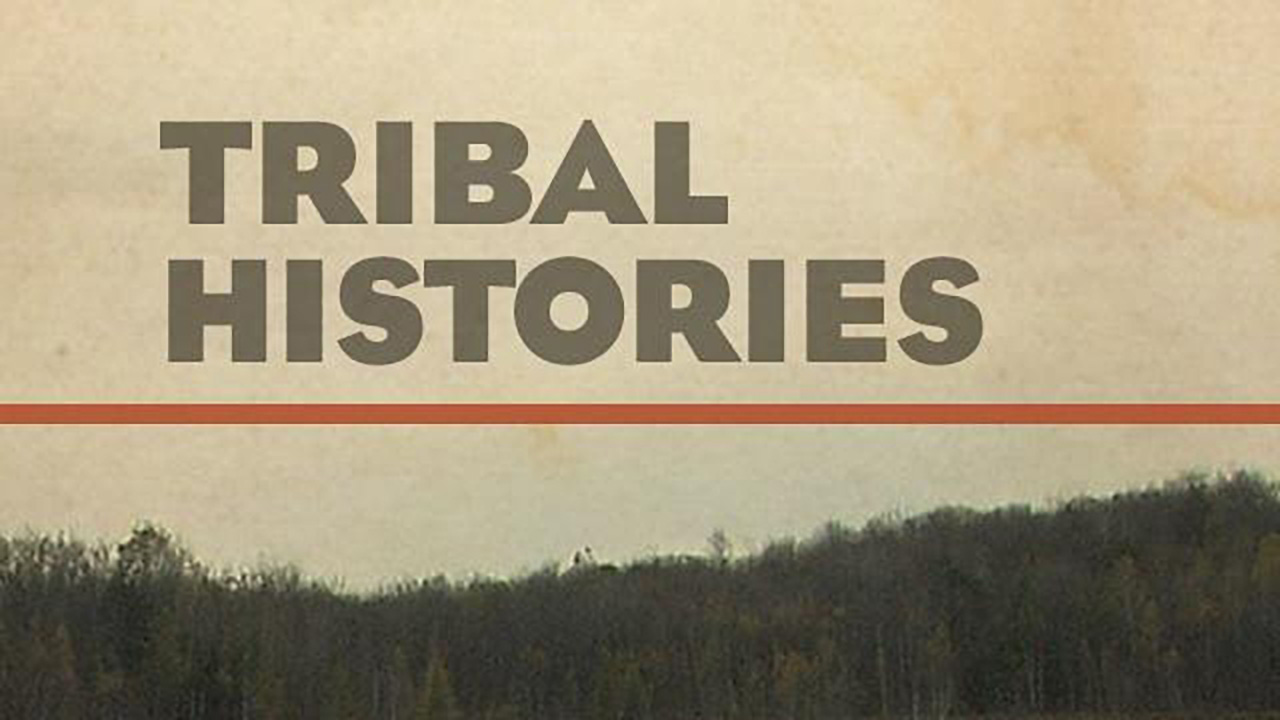





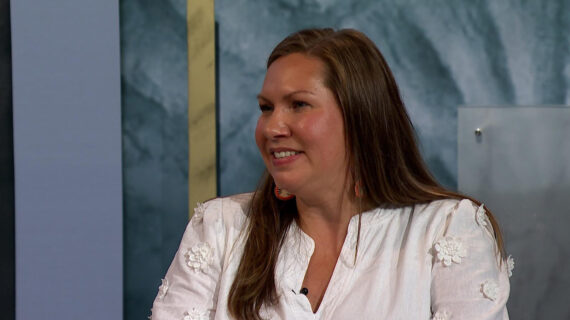

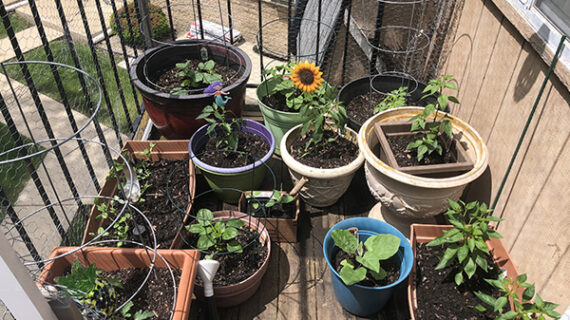
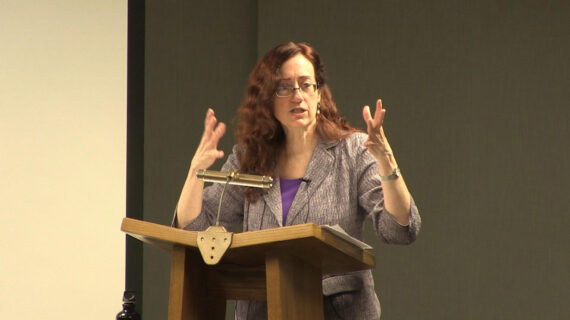
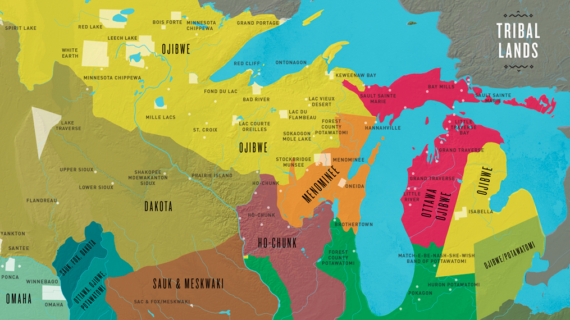
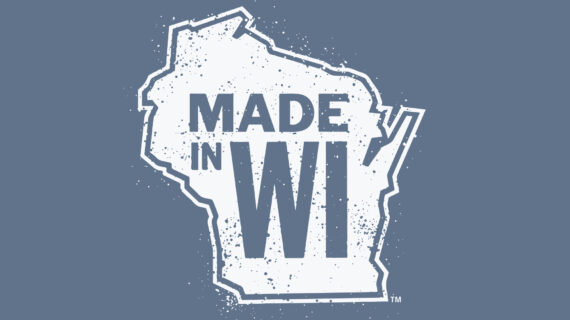
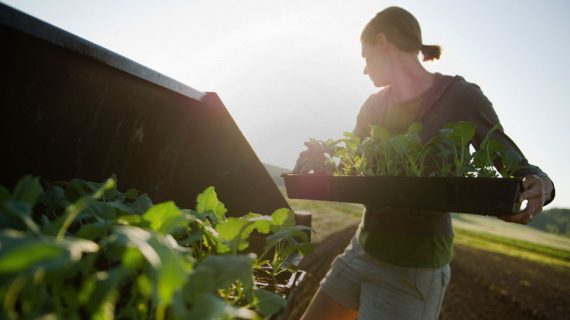



Follow Us